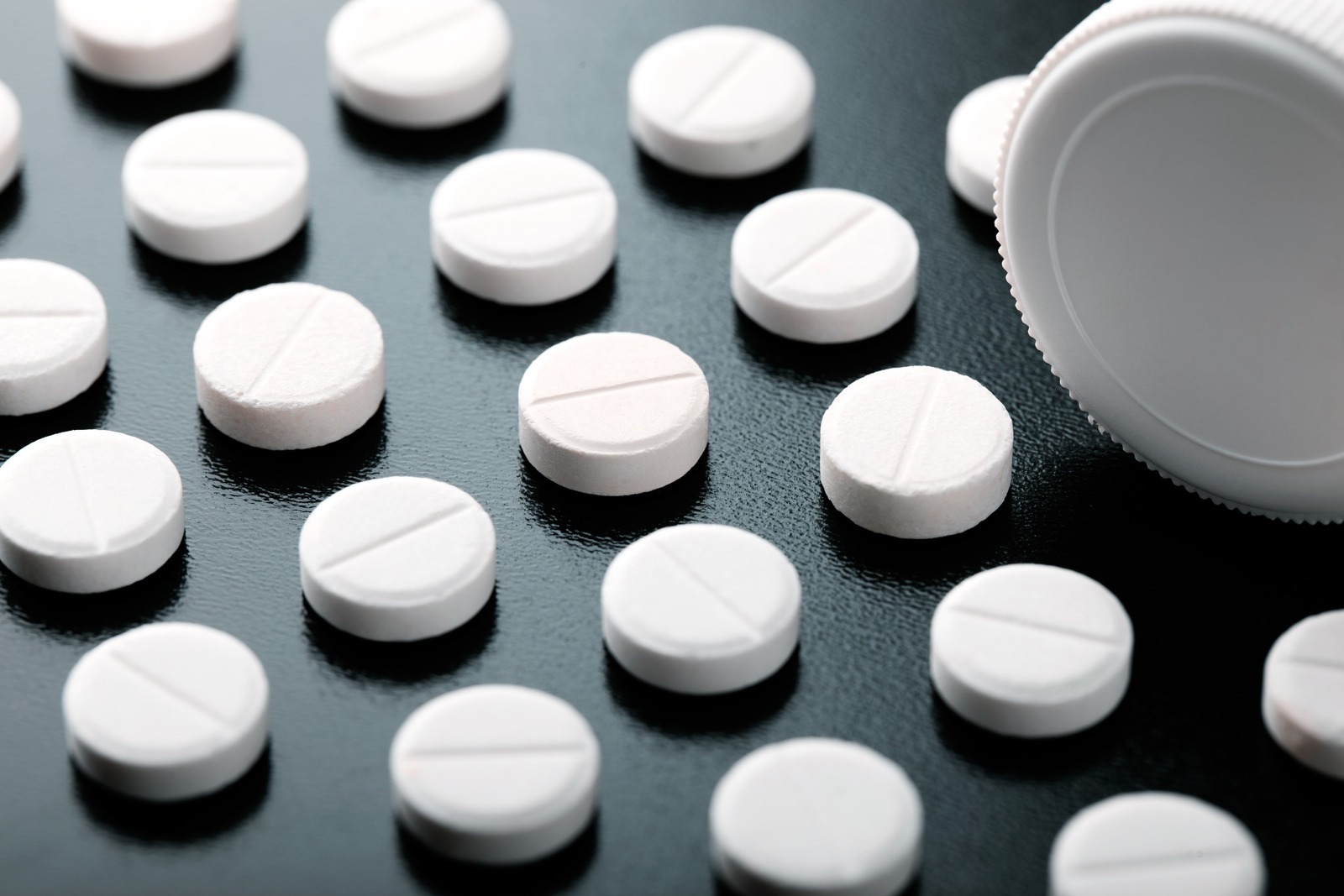Prescription Drugs | 6 min read
Most Abused Prescription Drugs
Medically Reviewed By

On March 27, 2023
Written By
On March 27, 2023

Are you wondering what the most abused prescription drugs are? The list may be longer than anticipated.
Prescription drug abuse occurs when someone misuses a prescription medication and/or develops a physical dependency. Many people quickly reach the tolerance level of a prescription drug with misuse and seek higher doses to reach the desired effects.
Central nervous system (CNS) depressants, opioids, and stimulants are classes of prescription drugs with the highest rates of misuse in the U.S.[1] A wide range of commonly prescribed medications fall into these classes, and they may be prescribed to adults, teens, and children.
Types Of Most Abused Prescription Drugs
Amphetamines
Some of the most common prescription medications are amphetamines. This classification includes Adderall and Dextroamphetamine. They’re commonly used stimulants to treat ADHD and narcolepsy. However, unfortunately, they also lead to misuse to achieve a high or boost alertness and energy or to suppress weight gain.
Barbiturates
These prescription drugs are sedatives and include pentobarbital, phenobarbital, and secobarbital. People use barbiturates and other depressants to relieve anxiety, sleep issues, and some kinds of seizures. Due to their potential for misuse and dependence, barbiturates are classified as Schedule II, III, and IV controlled substances in the U.S.
Benzodiazepines
Another sedative often prescribed to help with anxiety, panic attacks, and sleep issues, benzodiazepines are an effective treatment and safer to take than barbiturates. Three common benzodiazepines are alprazolam, clonazepam, and diazepam.
However, due to how benzos interact with the brain, they can lead to misuse and addiction. It’s strongly discouraged and potentially dangerous for anyone to change their dosage in any way without consulting their doctor or healthcare provider.
Opioids
Natural and synthetic opioid compounds create a high level of pain relief. When used as directed, opioids are an effective and safe option for managing injury- or surgery-related and chronic pain. But, codeine, hydrocodone, morphine, and oxycodone are commonly used for prescription drug abuse when taken longer than necessary or outside prescribed doses.
Effects of Stimulant Prescription Medications
These medications increase the function of dopamine and norepinephrine in your brain. Dopamine reinforces rewarding behaviors, while norepinephrine affects your blood vessels, blood pressure, heart rate, blood sugar, and breathing.
Short-term effects include:
- Decreased blood flow;
- Feelings of euphoria;
- Increased blood pressure and heart rate;
- Increased blood sugar levels;
- Increased breathing rate;
- Widened breathing passages.
Continued misuse may cause you or your loved one to experience anger, paranoia, and/or psychosis.
Effects of Depressant Medications
Did you know that medications prescribed for combatting depression are often also on the list of most abused prescription drugs? Doctors and healthcare providers prescribe depressants to help with sleep issues, anxiety, muscle spasms, and/or seizure prevention. Most are Schedule I to Schedule IV controlled substances, but many have FDA-approved medical uses.[2]
When misused, these medications may cause:
- Amnesia;
- Confusion;
- Impaired mental function and judgment; and
- Reduced reaction time.
You or your loved one may also experience physical side effects like:
- Blurred vision;
- Dizziness;
- Headache;
- Lightheadedness;
- Loss of motor coordination;
- Low blood pressure;
- Nausea;
- Slowed breathing; and/or
- Vomiting.
Gabapentin Addiction
Many wouldn’t expect to see this drug on the list of most abused prescription drugs, but it’s quickly climbing the ranks. Known by its brand names of Gralise, Horizant, and Neurontin, gabapentin is an anticonvulsant prescribed to relieve pain caused by nerve damage. It’s also used for epilepsy and restless leg syndrome.
While gabapentin is a less addictive opioid alternative, it’s potentially addictive. It may cause abrupt behavior changes, appetite changes, elevated blood pressure, chest pain, fever, mood swings, sleep issues, and suicidal thoughts.
Ambien Addiction
Ambien is a sedative often prescribed as a short-term solution to treat insomnia, though an extended-release formula can also help maintain sleep. It loses potency as you or a loved one use Ambien for several weeks as a sleeping pill tolerance develops. Dependence occurs when one needs higher quantities of Ambien to sleep, either in larger or more frequent doses.
Xanax Addiction
Known by its brand name Xanax, alprazolam is a type of benzodiazepine used to treat generalized anxiety disorder, insomnia, and panic attacks. Nearly 17 million prescriptions for Xanax were written in the U.S. in 2020.[3]
You or your loved one may feel generally calm and relaxed after taking Xanax, with possible effects including anxiety, loss of coordination, and slurred speech. It’s an extremely addictive prescription medication, and many people discover their tolerance develops quickly to a prescribed dose.
Adderall and Dexedrine Addiction
On average, 5 million U.S. adults misuse prescription stimulants, such as Adderall and Dexedrine, each year.[4] These widely available stimulant drugs are both Schedule II controlled substances but are prescribed to children and adults for ADHD and narcolepsy treatment. Both increase attention, concentration, and focus when taken and control hyperactivity and impulsivity caused by ADHD.
Oxycodone and Hydrocodone Addiction
Oxycontin and Hydrocodone are two semi-synthetic opioids with high rates of substance use disorder. Both are used to alleviate moderate to severe pain and cause slowed breathing and digestion. If you or a loved one develop a substance use disorder with oxycodone or Hydrocodone, you may experience anxiety, increased heart rate, insomnia, and profuse sweating.
Codeine Addiction
Codeine is an opioid often added to prescription-grade cough syrup as a cough suppressant and used for mild to moderate pain treatment. Codeine breaks down in your liver, where it then returns into morphine, though as a less powerful form compared to pure morphine. It impacts the brain’s reward circuitry, causing you or a loved one to feel pleasure and heightened well-being. Codeine is a popular add-in to alcohol, marijuana, and soda.
Morphine Addiction
Morphine is used in many medically controlled situations since the drug is chemically similar to your body’s pain regulators, endorphins. While most substance use disorders with morphine happen after periods of misuse, even monitored prescription use can lead to a use disorder. Signs of a use disorder include constipation, drowsiness, itchiness, loss of consciousness, and loss of motor control. A 2018 study found a strong link between morphine addiction and future heroin use disorder.[5]
Valium Addiction
Diazepam, or the brand name Valium, is prescribed by a doctor or healthcare provider to ease anxiety, muscle spasms, and seizures. It’s sometimes used to alleviate alcohol withdrawal symptoms. The effects of Valium last longer than other benzodiazepines, and a use disorder can quickly develop with misuse.
Ibuprofen Addiction
Ibuprofen is a common over-the-counter pain reliever and is available with a prescription. You or a loved one may have an ibuprofen use disorder if you’re:
- Exceeding the recommended maximum dose;
- Taking more than the recommended daily limit; and/or
- Taking ibuprofen preventively.
Percocet Addiction
Percocet is a Schedule II controlled substance and a common cause of substance use disorder. It’s a combination of oxycodone and acetaminophen and is used to control and relieve pain when non-opioid medicines don’t. Regular doctor or healthcare provider supervision is strongly recommended when taking Percocet to avoid a painkiller addiction.
Lyrica Addiction
Also known by its generic name, Pregabalin, Lyrica is an anticonvulsant drug. It’s frequently used to treat seizures and offer pain relief for diabetes, fibromyalgia, herpes zoster, and spinal cord injuries. Though it’s considered to have a low potential for abuse, misuse can cause effects of calmness, euphoria, and relaxation.
Vyvanse Addiction
Vyvanse is a prescription stimulant used to treat ADHD and binge eating disorders. It’s a Schedule II controlled substance; use disorder symptoms are often similar to other stimulants, such as:
- Increased blood pressure and heart rate;
- Insomnia;
- Physical exhaustion; and
- Reduced appetite.
Vicodin Addiction
This prescription painkiller is used to alleviate moderate to severe pain. Vicodin is a blend of hydrocodone and acetaminophen. Hydrocodone, as a synthetic opioid that activates the same neurotransmitters in your brain as other opioids. Because it has a high potential for misuse, Vicodin is a Schedule II controlled substance.
Lorazepam Addiction
Also known by its brand name, Ativan, lorazepam is a benzodiazepine used for short-term anxiety relief but also on the long-term list of most abused prescription drugs. A use disorder may occur if someone takes lorazepam for more than the recommended two to four weeks, though dependence can occur in as little as one week. It causes a user to feel calm, relaxed, or in a sedated state.
Clonazepam Addiction
Klonopin, the brand name for clonazepam, is a CNS depressant used to treat panic disorders and seizures. It creates anticonvulsant and anti-anxiety effects for users but has the potential for misuse and dependence. Misuse often concurs with misuse of other prescription drugs, such as opioids.
Modafinil Addiction
Modafinil, or the brand name Provigil, is prescribed primarily for narcolepsy and shift work sleep disorder. However, it may be used off-label for ADHD or medical conditions with excessive fatigue. It’s a CNS stimulant that may be misused for enhanced concentration and focus levels, appetite reduction, and euphoric effects.
Though it is a Schedule IV controlled substance — low potential for misuse and dependence — some research suggests if you or your loved one have a history of a substance use disorder, you may be more apt to develop a use disorder with modafinil too.
Prescription Drug Use Disorder Treatment Is Available
No matter how long you or a loved one have a prescription drug addiction, we’re here to help on the road to recovery. Our trained medical professionals approach each patient individually, so they have a treatment plan that works for them and their situation. Contact us today to begin your journey from prescription drug use disorder.
Ascendant New York Editorial Guidelines
Here at Ascendant New York, we understand the importance of having access to accurate medical information you can trust, especially when you or a loved one is suffering from addiction. Find out more on our policy.
- NIDA. (2022, October 14). What classes of prescription drugs are commonly misused? Retrieved from https://nida.nih.gov/publications/research-reports/misuse-prescription-drugs/what-classes-prescription-drugs-are-commonly-misused on 2023, January 21
- Department of Justice/Drug Enforcement Administration. (2020, April). Drug fact sheet: Depressants. Retrieved from https://admin.dea.gov/sites/default/files/2020-06/Depressants-2020.pdf on 2023, January 21
- Mikulic, M. Statista. (2022, October 17). Number of alprazolam prescriptions in the from U.S. 2004-2020. Retrieved from https://www.statista.com/statistics/781816/alprazolam-sodium-prescriptions-number-in-the-us/ on 2023, January 21
- Compton, M.D., M.P.E., W. M., Han, B., Blanco, C., Johnson, K., & Jones, C. M. American Journal of Psychiatry. (2018, April 16). Prevalence and correlates of prescription stimulant use, misuse, use disorders, and motivations for misuse among adults in the united states. Retrieved from https://ajp.psychiatryonline.org/doi/10.1176/appi.ajp.2018.17091048 on 2023, January 22
- NIDA. (2022, February 25). Prescription opioid use is a risk factor for heroin use. Retrieved from https://nida.nih.gov/publications/research-reports/prescription-opioids-heroin/prescription-opioid-use-risk-factor-heroin-use on 2023, January 21





